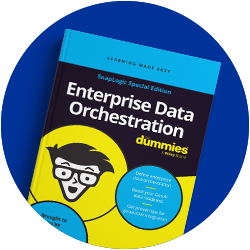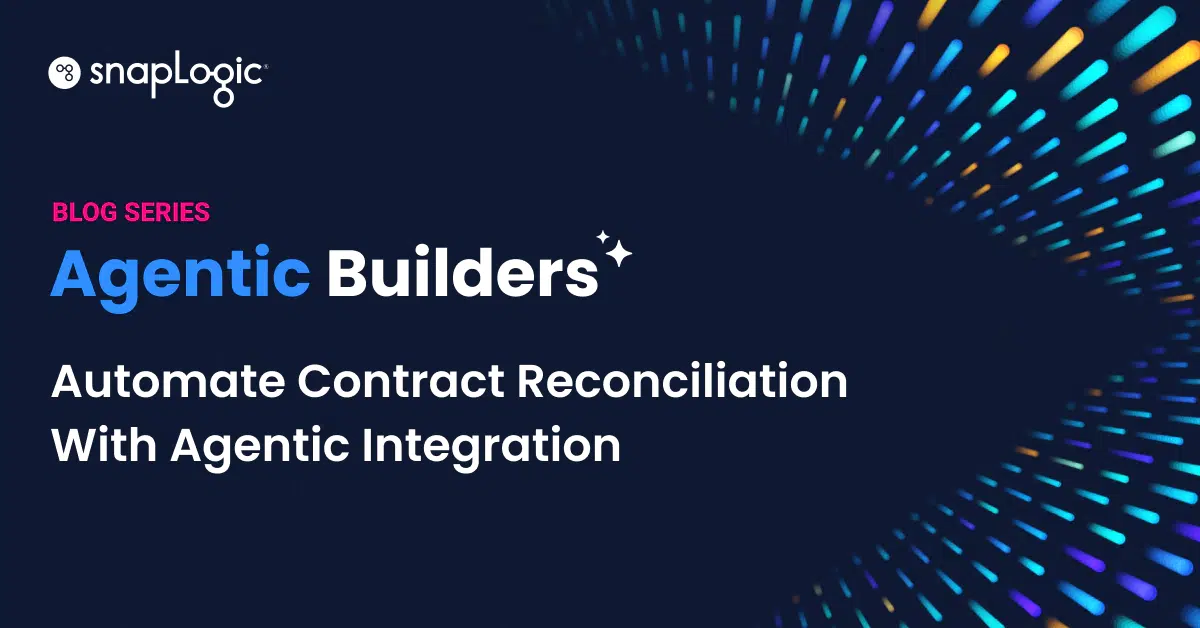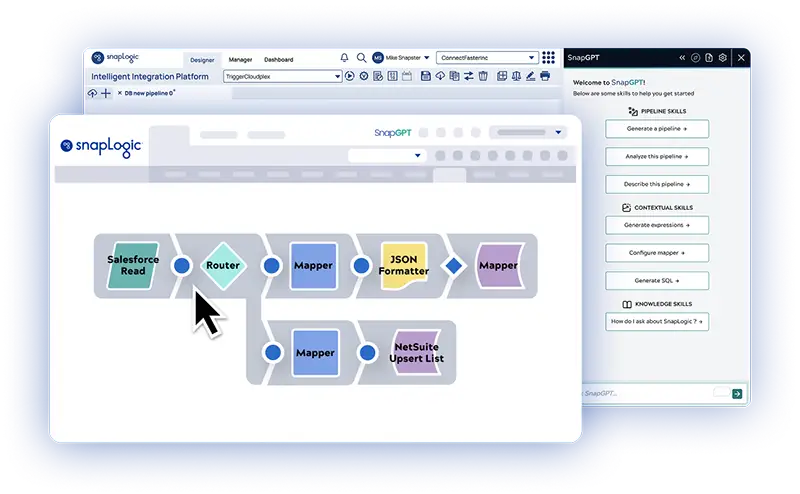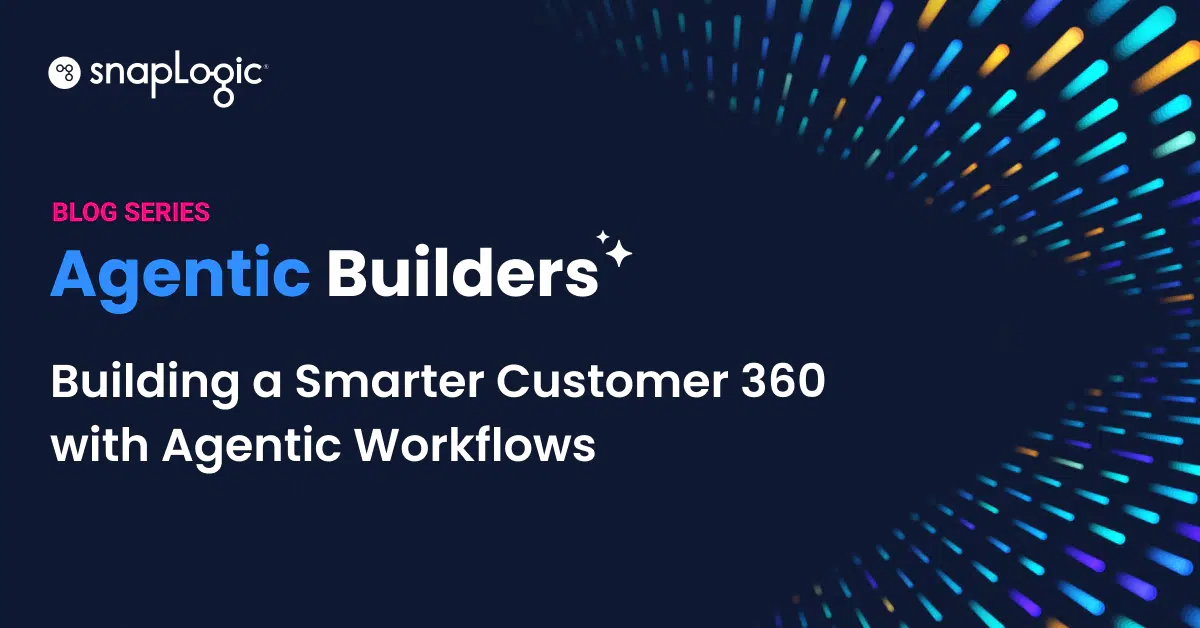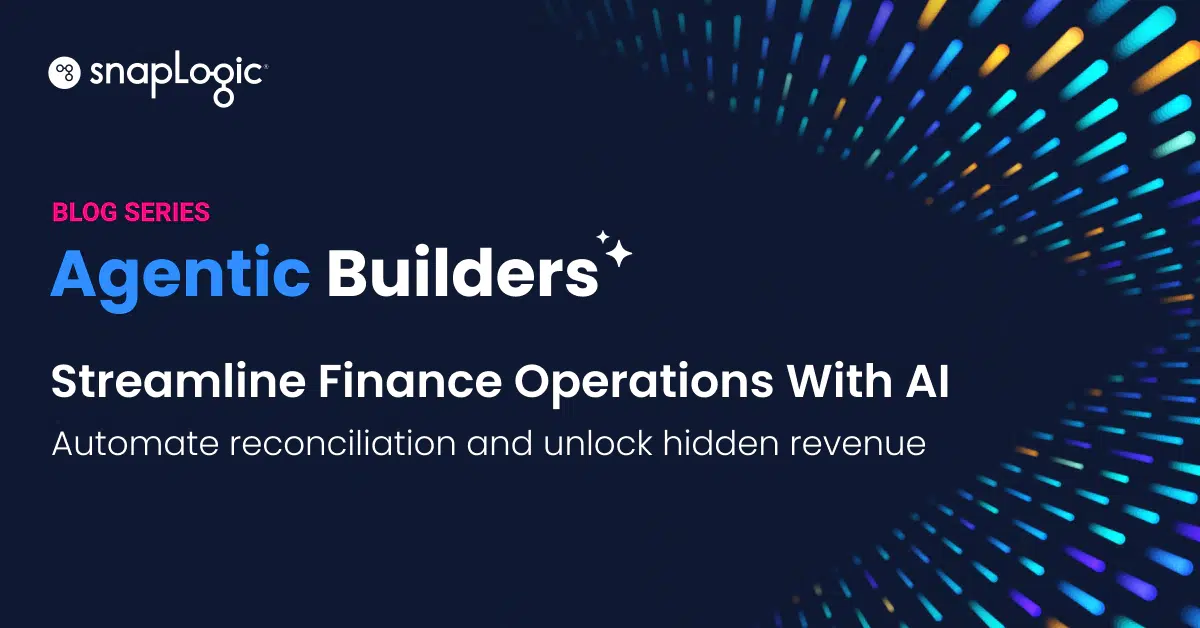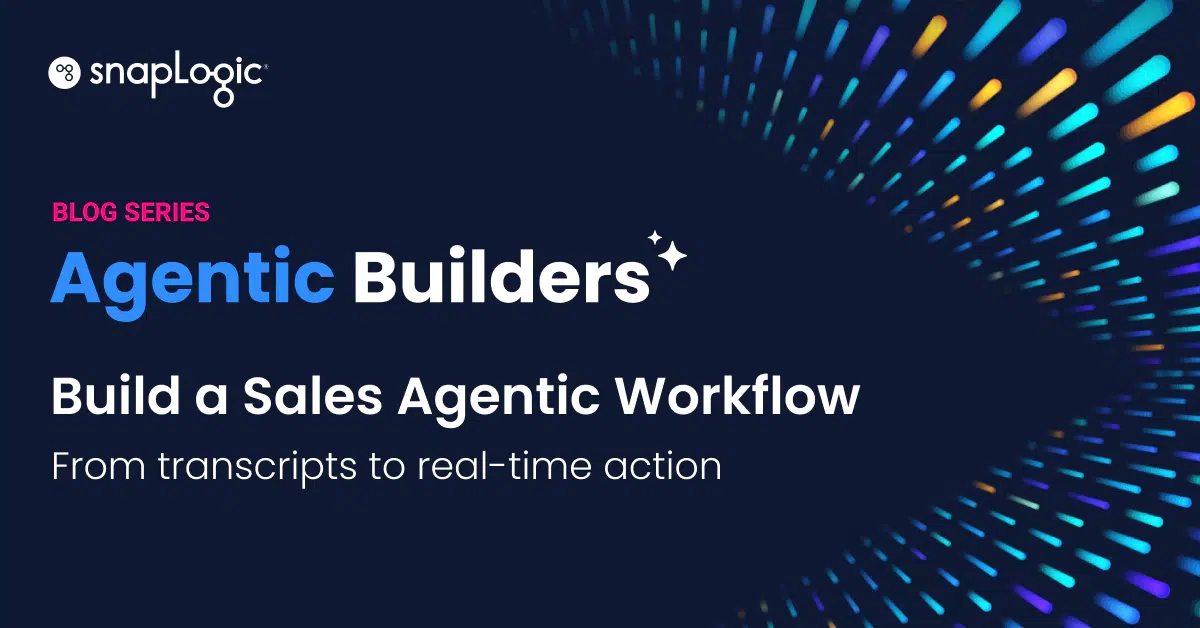When it comes to revenue operations, contract reconciliation is one of those processes that everyone knows is painful, but few have managed to fix. Contracts come in as PDFs or scans, data lives in Salesforce and ERP systems, and stitching it all together usually means hours of manual work. Errors creep in, revenue forecasting suffers, and deals stall out while teams chase missing details.
In our latest Agentic Builders webinar, I walked through how we used SnapLogic to take this problem off the table, building a RevOps agentic workflow that reconciles contracts automatically, connects data across systems, and updates Salesforce without anyone lifting a finger.
Why contract reconciliation hurts
For most RevOps teams, the process looks something like this:
- Sales closes a deal and uploads a contract
- Finance or operations has to pull details from that PDF and manually rekey them into Salesforce
- If there’s a mismatch, someone digs through emails or Box folders to sort it out
It’s slow, it’s inconsistent, and it eats into valuable time that could be spent on revenue growth. Even with tools like RPA, all you’re really doing is mimicking human clicks, but you’re not solving the bigger challenge of connecting unstructured contracts with structured CRM and ERP data.
Where agentic workflows change the game
With SnapLogic, we can approach this differently. Instead of relying on humans to parse documents and copy data, an agent can:
- Ingest contracts from Box, Google Drive, email, or anywhere else
- Parse contract details automatically using multimodal AI
- Cross-check Salesforce records to find the right opportunity
- Update fields in CRM with reconciled data
What used to take hours now happens in seconds. By automating reconciliation, RevOps can improve accuracy, protect revenue, and reallocate valuable time toward strategic initiatives that move the business forward.
A look inside the demo
During the live session, we walked through how the RevOps agentic workflow works:
- A contract PDF was uploaded and parsed automatically.
- The agent generated a Salesforce query on its own to identify the right opportunity ID.
- Key fields in Salesforce (e.g., payment status and payment details) were updated instantly.
From start to finish, the entire process took less than 20 seconds.
And thanks to Agent Visualizer, we could see each step the agent took: parsing the contract, locating the opportunity, and writing back to Salesforce. That visibility builds trust, especially for teams new to working with AI-powered agents.
Building with trust and governance in mind
A big part of this solution was not only making it work but also making it secure and explainable. SnapLogic’s governance features were essential.
Prompt Composer ensured that the LLM extracted the right details and avoided hallucinations, giving us reliable insights to work with.
Equally important, API Management (APIM) wrapped every tool in the workflow with enterprise-grade controls. With APIM in place, we could enforce authentication, apply security policies, and maintain consistent access rules across systems. Sensitive contract and revenue data moved faster, but it also moved with the right guardrails in place and with full visibility into who accessed what and when.
Agent Visualizer added another layer of trust by showing exactly how the agent reached its outputs, making the reasoning clear to both technical and business users.
Together, these elements of security, lineage, and governance made the workflow truly enterprise-ready and a solution teams can rely on in production.
Unlocking accuracy, speed, and growth
When contract reconciliation is automated through an agentic workflow, RevOps gains more than just time back.
Teams can walk into every deal review with accurate, up-to-date data, rather than scrambling to reconcile details. Forecasts become sharper because Salesforce stays clean. Errors that once slipped through and risked revenue are caught early. And the hours once lost to parsing PDFs can be redirected toward building a pipeline and accelerating growth.
The bigger shift is this: RevOps can finally step out of admin mode and take its place as a true driver of revenue strategy.
Lessons for builders
A few takeaways stood out as we built this workflow:
Start simple. Our first version focused on PDFs and Salesforce. From there, we layered in more tools and use cases.
Lean on visualization. Showing how the agent thinks makes adoption easier for both technical and business users.
Build with governance. Wrapping tools with API management ensures workflows scale securely across the enterprise.
What’s next
Contract reconciliation is just one example of how agentic workflows can reshape RevOps. The same model applies to invoices, compliance documents, purchase orders, and any process where unstructured files need to flow into structured systems.
The takeaway is simple: you do not need to tackle everything at once. Start by connecting the systems that matter most, automate a single workflow, and expand from there. SnapLogic gives you a clear path to take that first step.
The final live episode of the Agentic Builders webinar series is happening live this Thursday (October 2), and all past sessions are available on demand. Each one offers a step-by-step look at how to design agentic workflows and connect your data for smarter, faster operations.
Explore the full series here: Agentic Builders.

